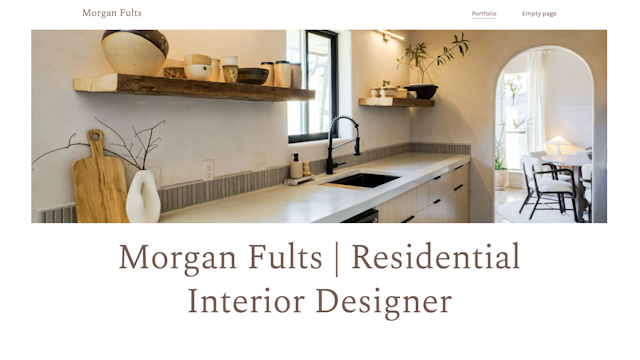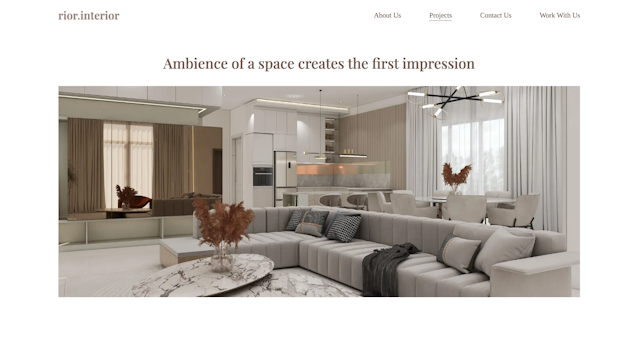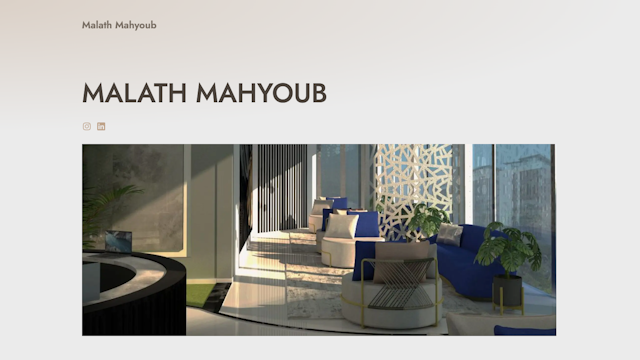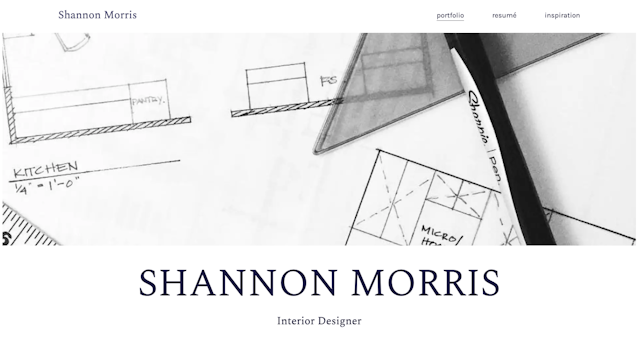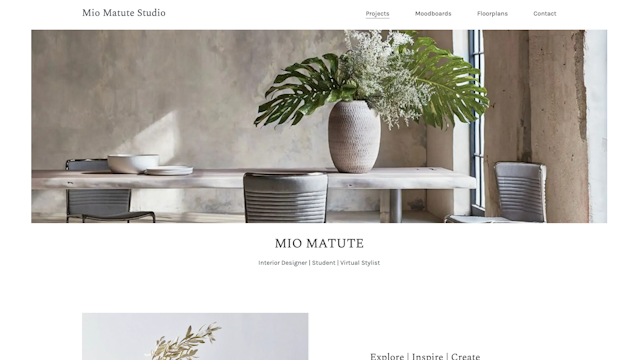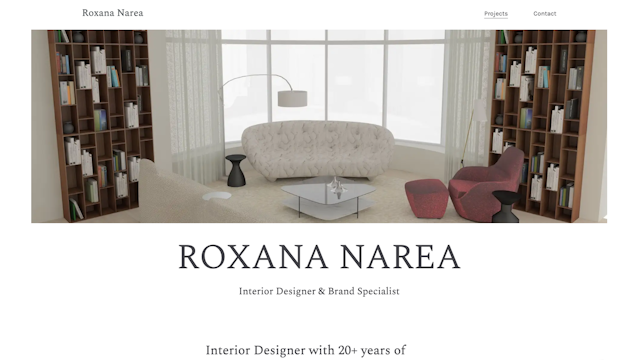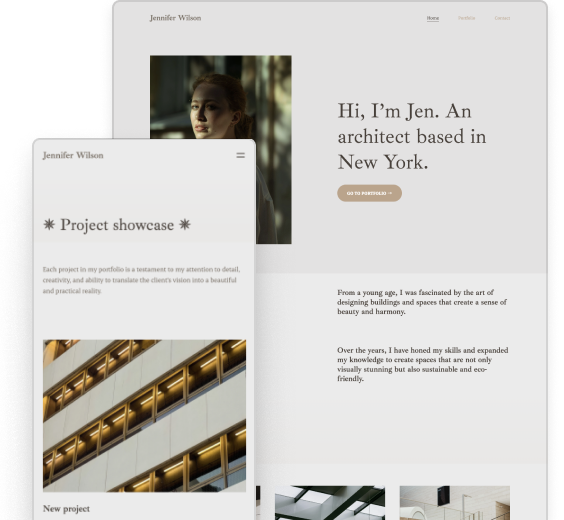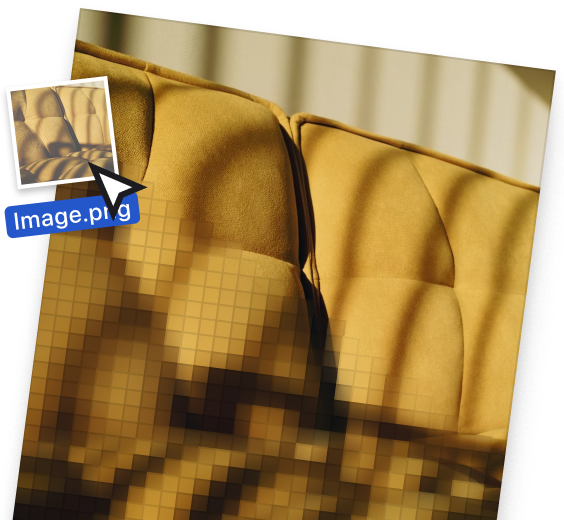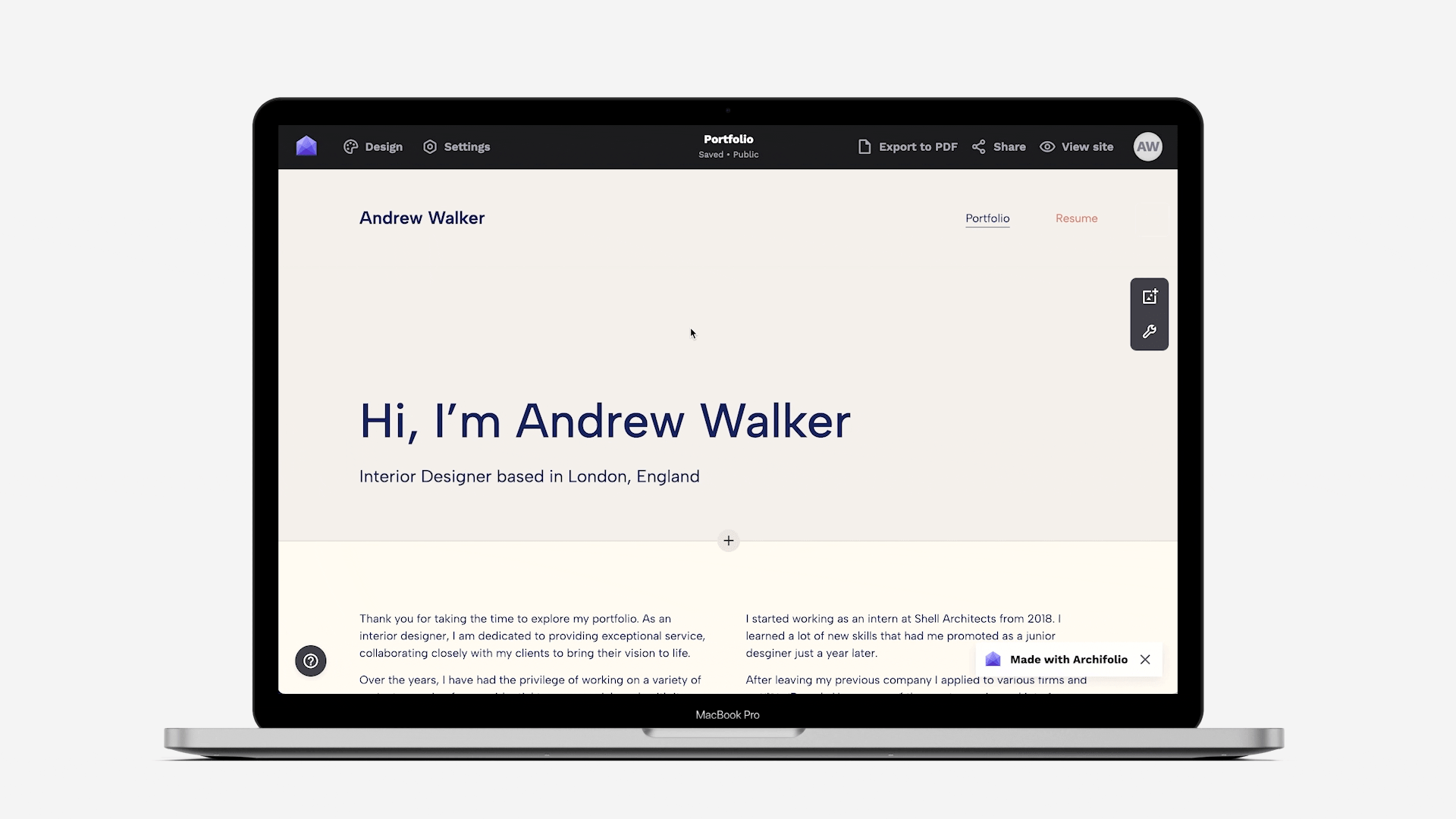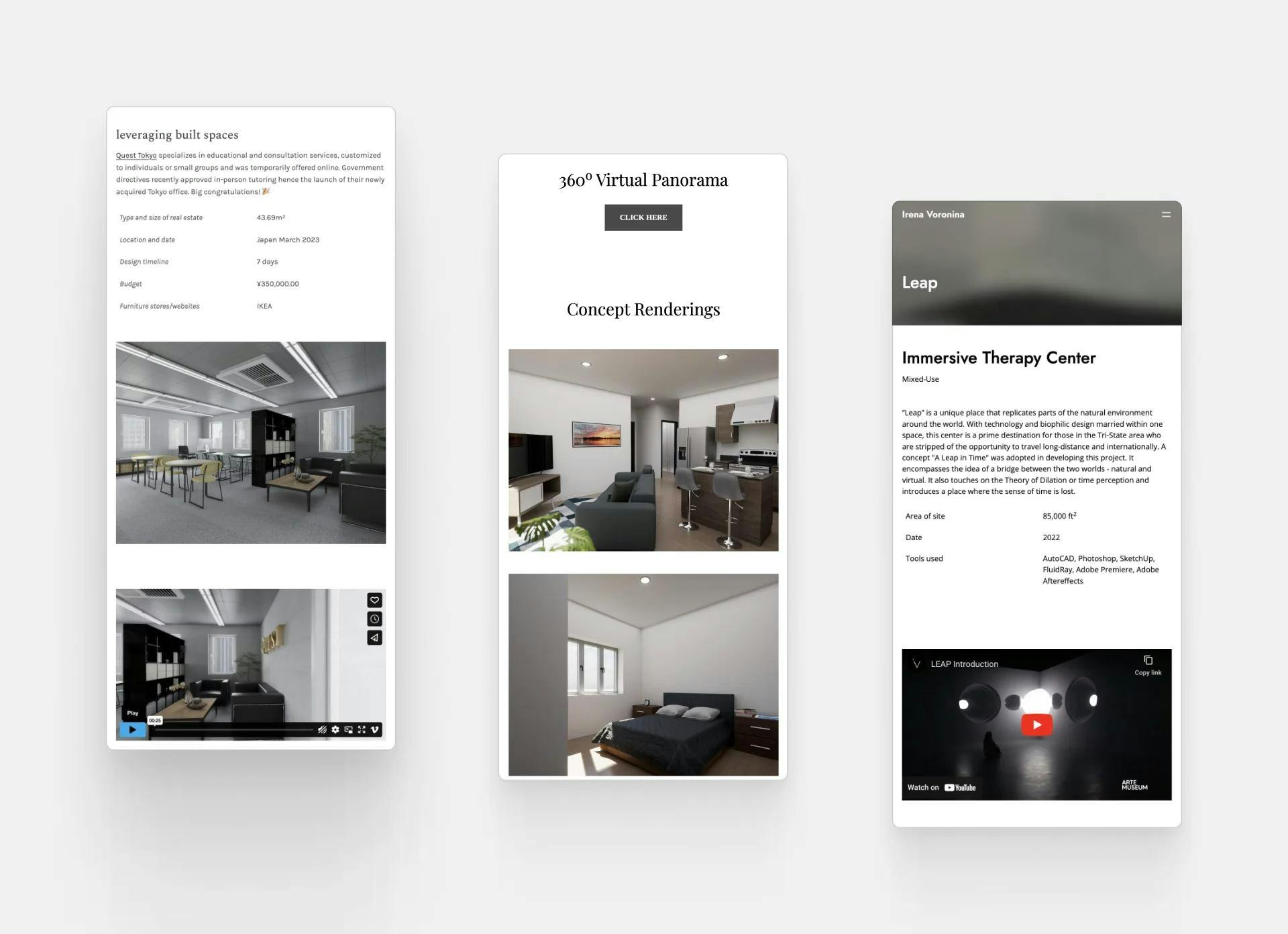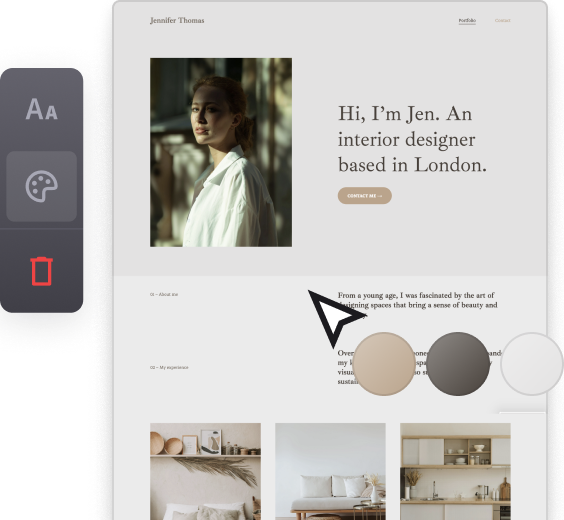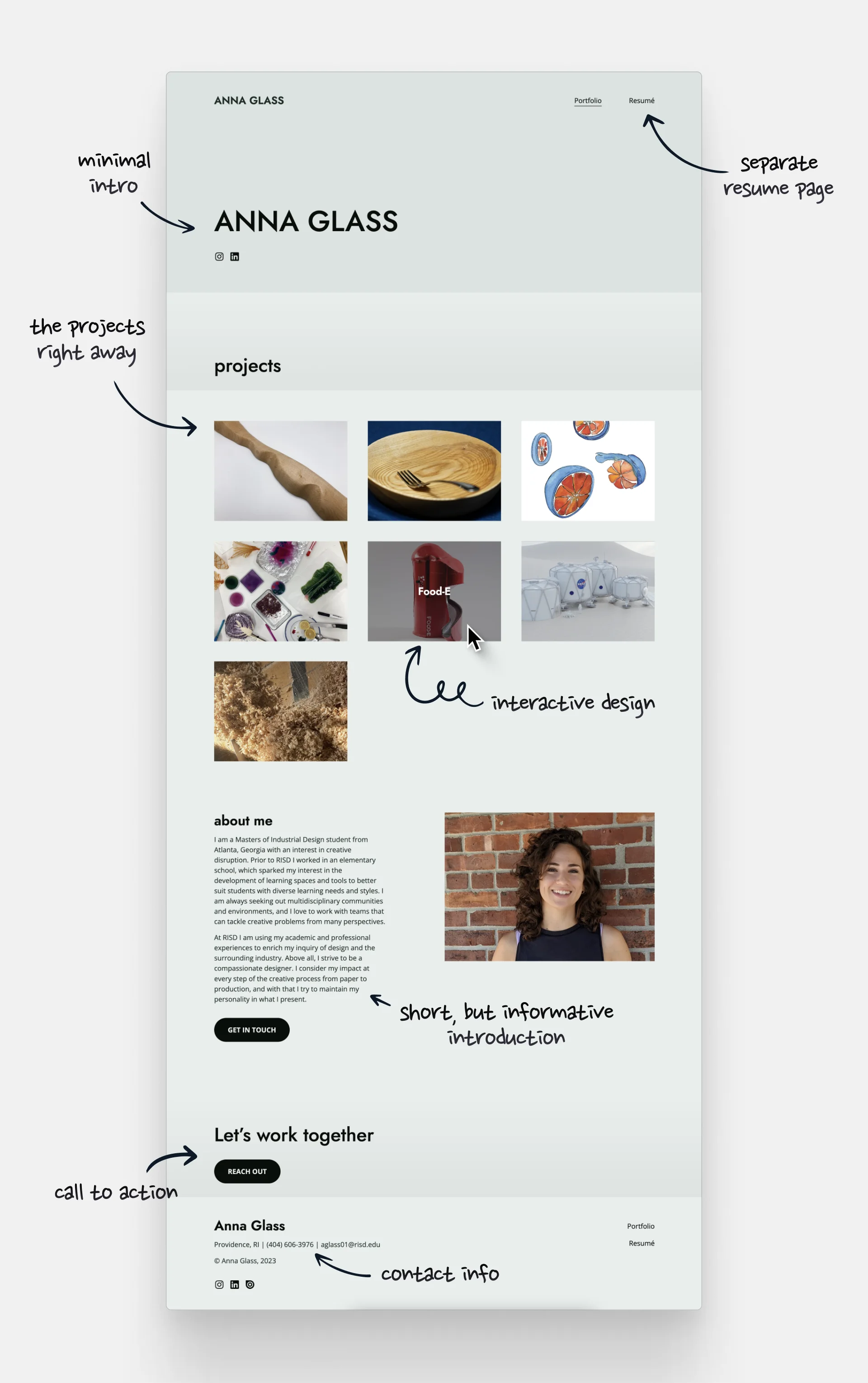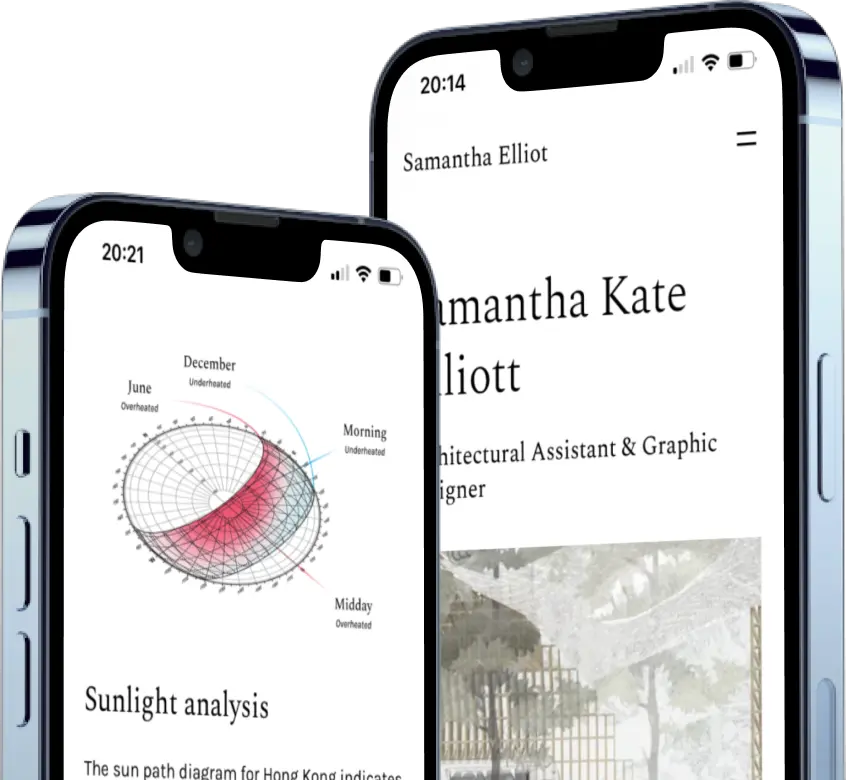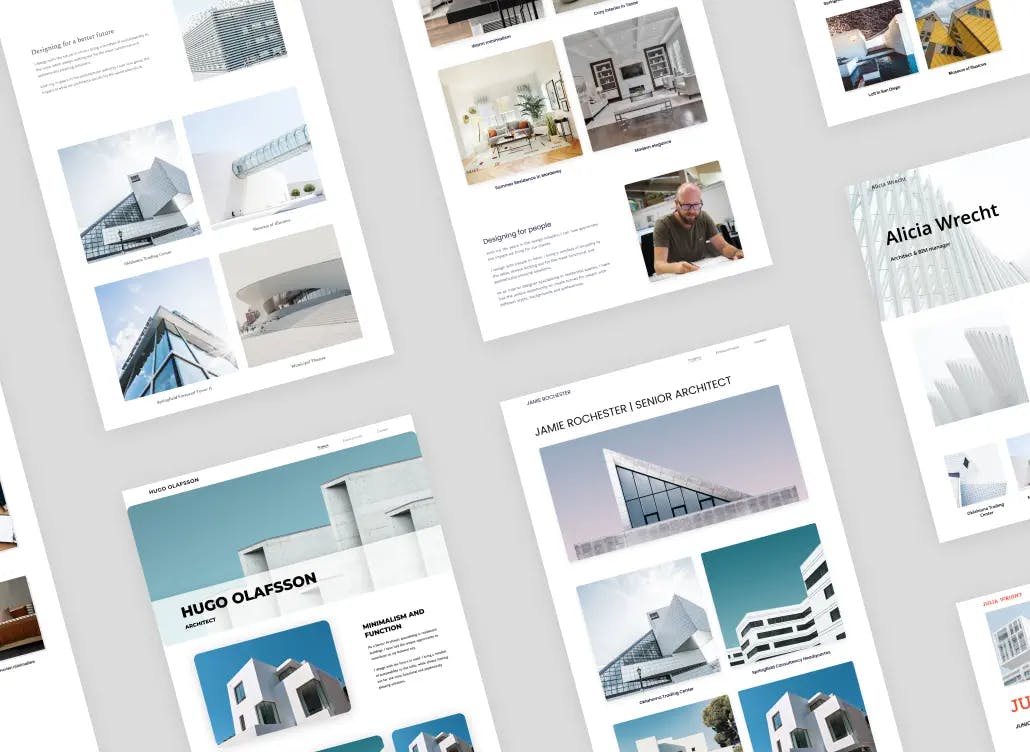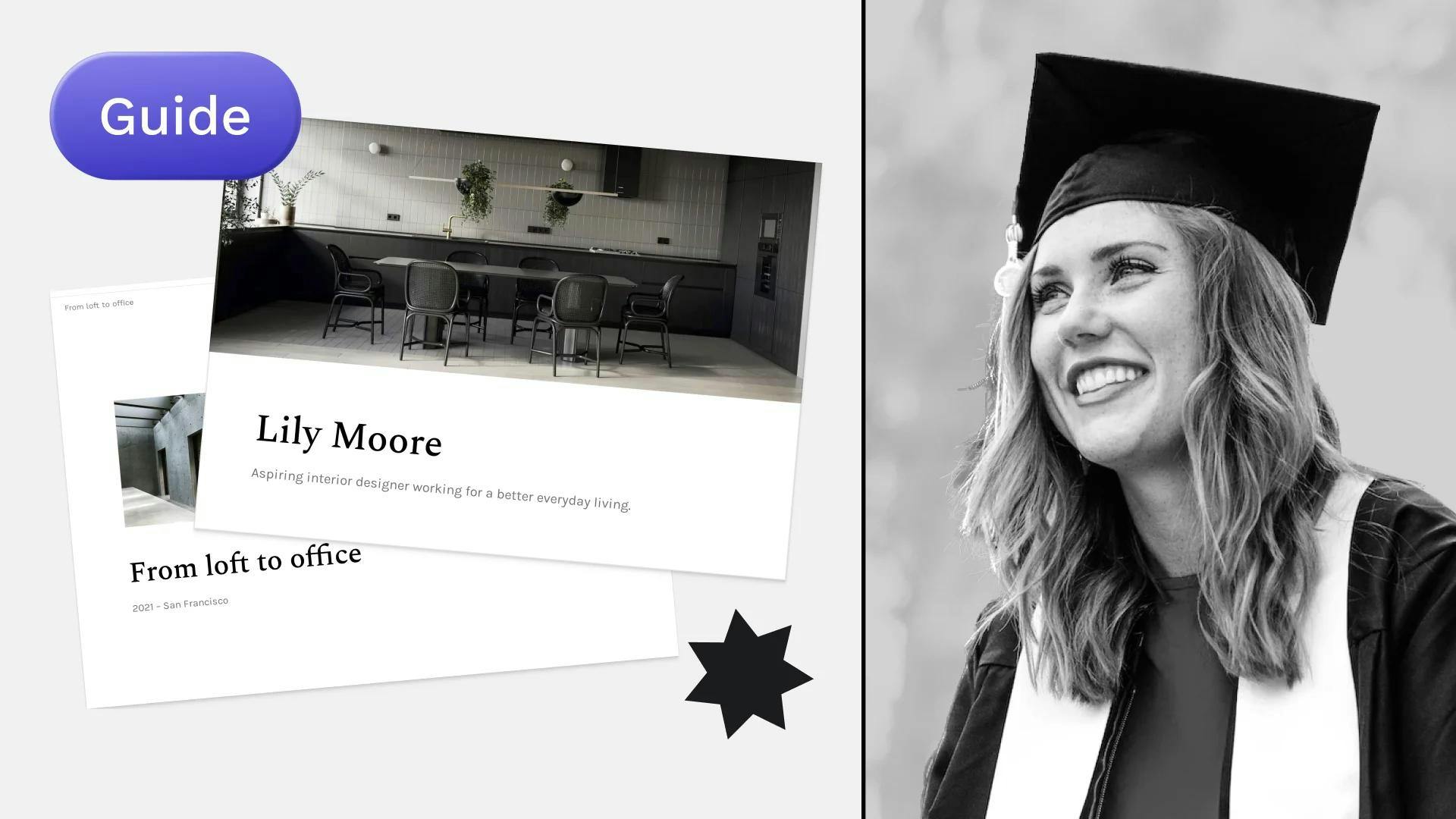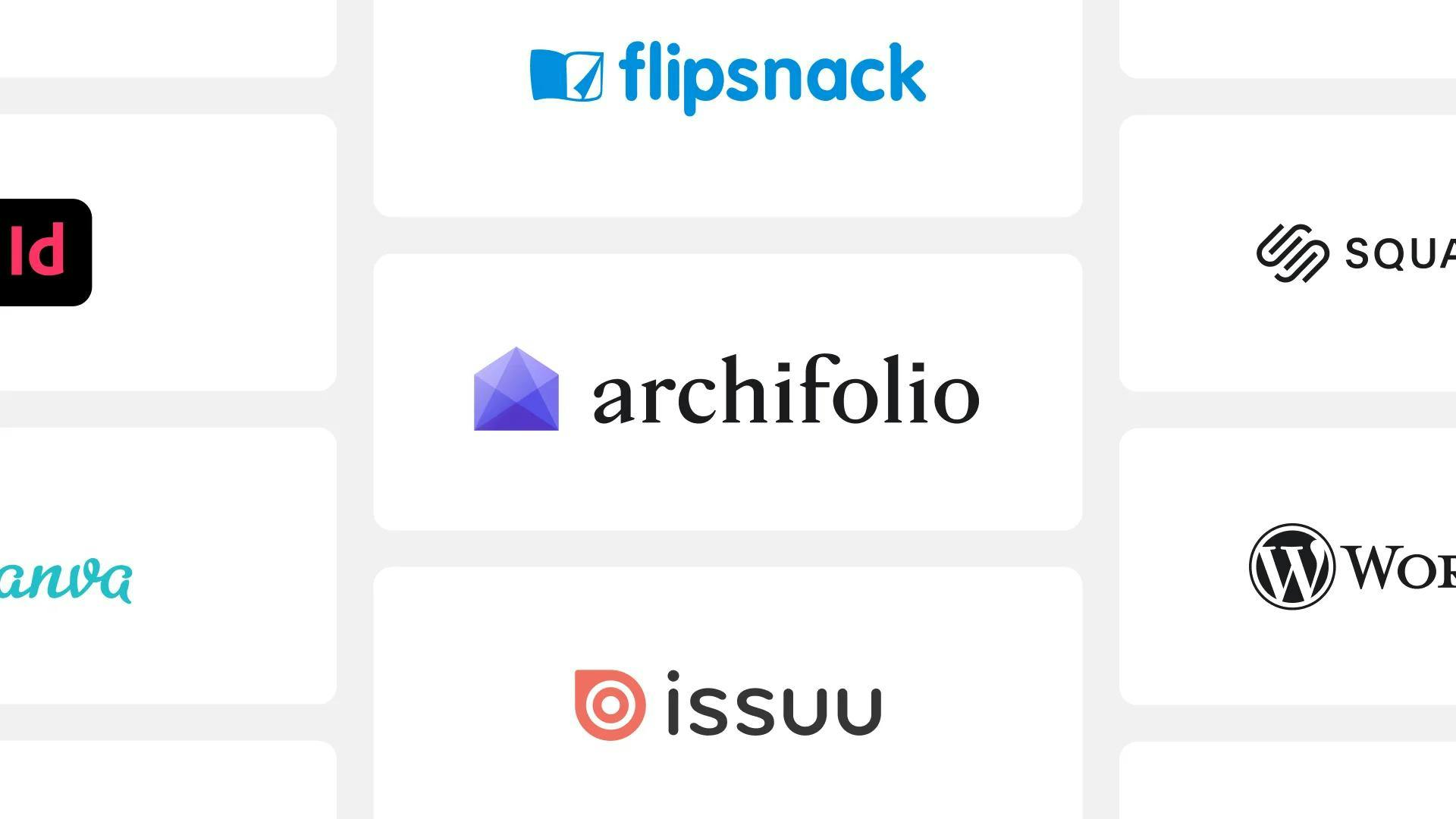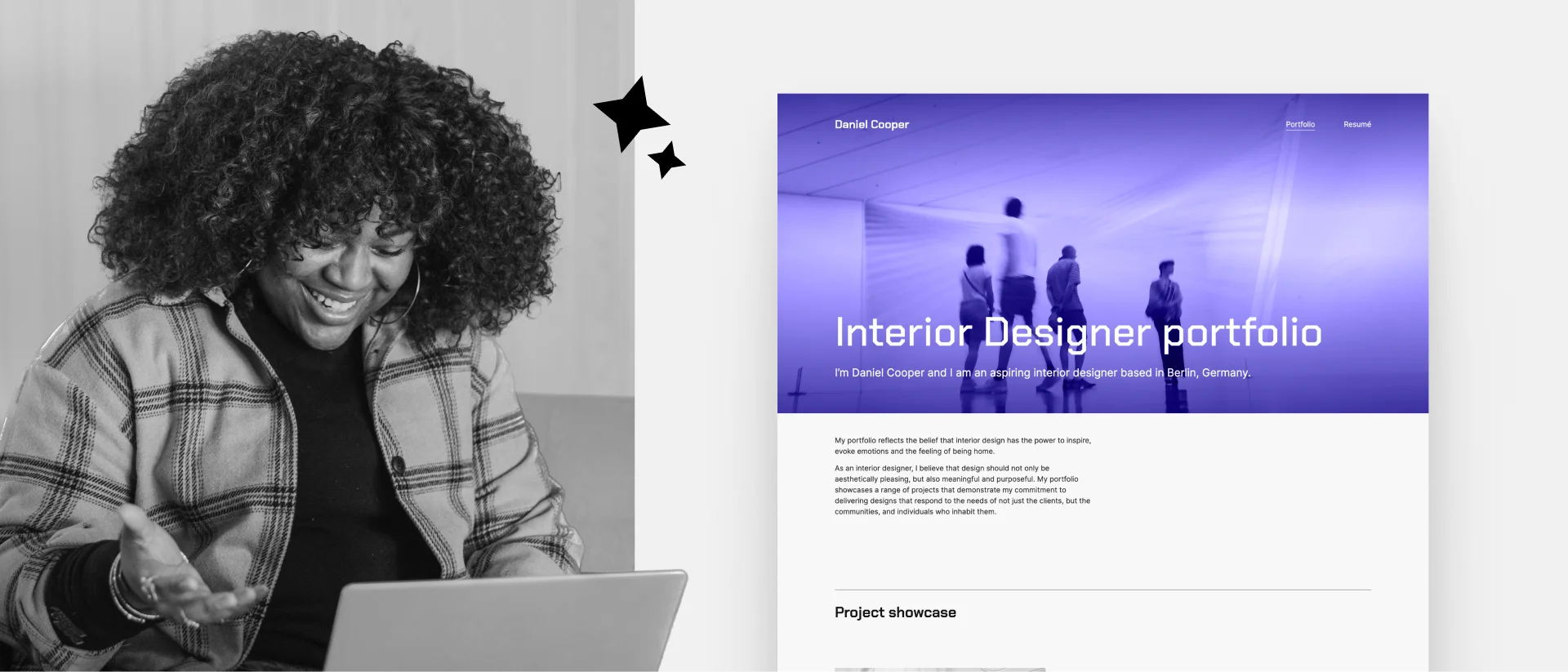
7 Reasons You Need an Interior Design Portfolio Website - Examples & How-to
Welcome to this exciting new era of your career. If you’re ready to elevate your job application process, then you’re at the right place. An interior design portfolio website is an essential part of this next step. Why? Let’s find out!
Interior Design Portfolio Website Examples
Before anything, here are a few examples for some inspiration. These were all made by the talented members of the Archifolio community.
Why do you need an interior design portfolio website?
1. Because it makes you stand out.
Having an interior design website establishes your credibility and professionalism. It demonstrates that you’re tech-savvy and that you adapt to current trends and technologies. These are, nowadays, all too important skills to have as an interior designer.
The whole industry is moving towards digital and online solutions (just see the spread of virtual reality in planning, or BIM management as a whole). Why should your job application be any different?
2. Because it’s easier to create than a PDF portfolio.
Surprised that building a website is so easy? You shouldn’t be. With the right tool, creating an interior design website is a piece of cake.
Using a website builder that’s specifically created for interior designers simplifies the process of portfolio building. This allows you to create a professional website efficiently, even if you don't have coding or web design skills.
We created Archifolio based on the needs and feedback of you and your peers. With it, you can create a site that’s unique, well-structured, and reliable without the hassle.
Other than stunning templates created specifically for interior designers and architects, we introduced global font and color settings. Forget going back to each small caption’s text box and changing the fonts one by one. Set it up at the master level, and you’ll have a consistent and beautiful website in no time.
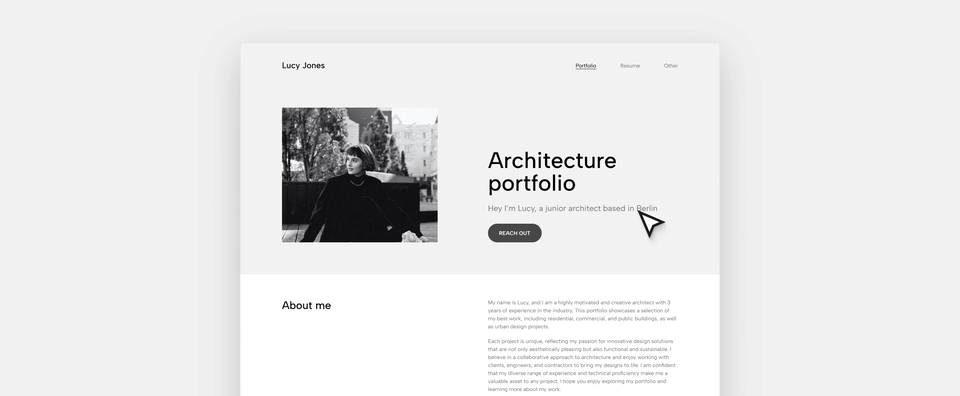
3. Because recruiters hate huge PDFs.
Oh, the dreaded file size problem. By now you’ve probably encountered instances when companies restrict the size of the PDF portfolio to 10 or even 5(!) MB.
If you want to keep the high-quality of the images (which you definitely should), this isn’t a whole lot of content you can show.
But having an interior design portfolio website is an elegant solution to this annoying problem. You can showcase high quality images without worrying about file size limitations.
Usually, large images do take a long time to load on a website. However, Archifolio automatically converts them to an image format that’s optimal for online use (WEBP). This makes them fast to load while keeping them in crisp quality.
What’s more, on Archifolio there are no restrictions on the number of images you upload, making it the perfect place to store your projects.
4. Because it makes you discoverable.
By having a website, you establish an online presence, as well as increase the chances of being discovered by recruiters or potential clients. Plus, no matter how someone comes across your name, they will google you. If the first thing they see is your website, you’ll seem like a true professional.
To make sure that you appear in the search results for the relevant keywords, you should optimize your site’s SEO.
- Think of the keywords you’d like to be on top of Google’s results. The most common ones will be “your_name interior design”, “your_name your_location”, or “interior designer in your_location”. You can also find keywords people are searching for. Use a free keyword research tool, where you can see how many people google a certain term, and choose a couple that has low difficulty, but a high volume.
- Write relevant content on your page, and use the chosen keywords in it wherever possible.
- Also, use them in your URL slug, your meta description, and your title. You can set these for each page under Settings (top left corner) > Search Engine Optimization.
- Set an alternative text for your images (and use your keywords where it’s relevant and fits organically). This is advisable to ensure that even the visually impaired can understand your page, but it’s also important for search engines. You can set your ALT text for each image if you click on “Edit image”, and navigate to the “ALT text” tab.
- Buy your own domain. This is beneficial for so many reasons, one of which is optimizing your page’s SEO and building strong domain authority.
- By default, your Archifolio site is visible to search engines, which can therefore crawl your website and show you in the search results. If you want to change this, or you want to check your settings, you can do so under Settings > Privacy. Keep in mind that the changes you make here may take a couple of days (sometimes even weeks) for Google to notice.
- Make sure you update your site often, Google prefers to rank those pages that are active.
5. Because a website is interactive.
Having an interior design portfolio website opens up a whole new world of possibilities. You can include videos, slideshows, 3D walkthroughs or 360-degree views of your projects, or even links to publications where you were mentioned.
And if you want such features to run smoothly and scale as your audience grows, partnering with a Node.js consultancy can be highly effective, since they can optimize performance, handle complex integrations, and ensure your website delivers a seamless experience.
It’s a great way to showcase your innovativeness and engage the recruiters even more.
Consider creating a video resume instead of or beside your traditional one. It’s a great way to stand out from the crowd and give a memorable first impression to recruiters.
6. Because you can update it easily.
A great portfolio is never completely finished. As you mature in your career, your portfolio should evolve with you.
For example, we advise you to add every new project to your website right after you hand it over to the client. Thus, every piece of information will be fresh in your memory and you can avoid the all-nighters further down the road when you need an up-to-date portfolio again.
A website gives you the flexibility that a PDF (let alone a printed version) does not. Since it’s an ever-changing platform you can edit as you see fit.
In Archifolio, you have the option to set each project as “Public” or as “Draft”. This means that you have huge flexibility in what you share and what you don’t with certain employers. This makes it easy to tailor your applications to the position/firm at hand.
You can also play around with the style of your portfolio. Even after you’ve uploaded your images, you can change everything on the website (even the initial template), and your content will not be lost or affected.
7. Because as a freelancer, it’s a must.
You have different portfolio format options when looking for a job at a firm. However, if you want to ever try yourself out as a freelance interior designer you’re going to need a website without a doubt.
When you’re on the hunt for new clients, it’s a good approach to position yourself as a thought leader on certain topics your clients care about. You can do this by starting a blog or Youtube channel, where you explore certain topics and give your expert advice. A flexible website will aid you in these endeavors.
Even if it’s something in the future, you’ll be glad you started with your website today.
How to build an interior design portfolio website?
First of all, think about your purpose with the website. Whether you want to create one to attract clients or if you’re applying for a job at a company, you need to design your website differently.
With employers, cut right to the chase, and start with your projects. However, with clients, put a bigger emphasis on what values you bring to them if they decide to work with you.
Anna Glass created her stunning site with Archifolio's Modular template.
You will need to gather your project images in one place. You may have to get the images approved by your previous clients or employers, or you may have to take a trip down memory lane and export renders from your ancient 3ds Max files.
Then comes the fun part! Let’s put everything together. In Archifolio’s user-friendly editor, you can build your portfolio website in a matter of minutes. You’ll get…
- Access to stunning and customizable templates,
- Straightforward SEO settings,
- Domain connection or purchase possibility, alternatively free hosting,
- Dozens of font and color presets,
- Tons of layout examples to inspire you,
- Project page structure with help with writing,
- Easy access for recruiters and clients.
And the best part? Whenever you find yourself in need of a PDF version, you can simply export your site as a whole or with a couple of relevant projects.
You now have a good idea of the benefits an interior design portfolio website can bring to your career. It’s time to put all this into action. Start creating your site today!
